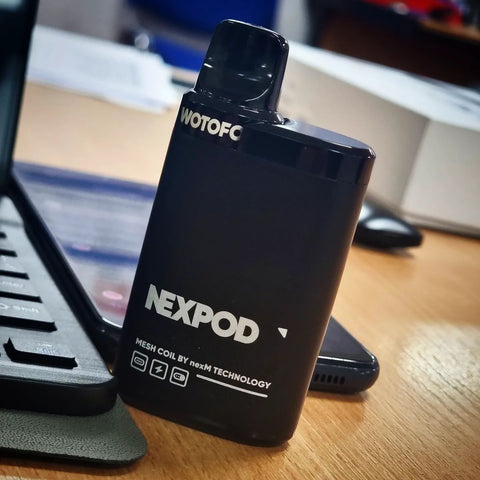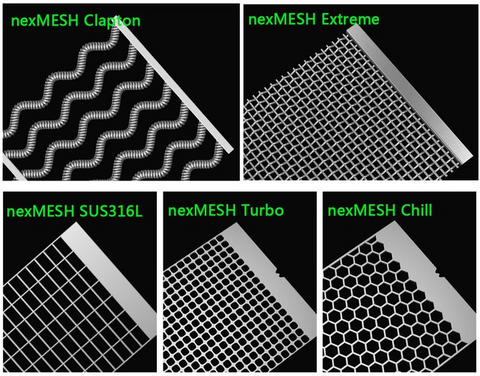May 25 2022 0 Comments E-cigarettes Synthetic Nicotine vape juice

You’ve probably heard that the vaping industry has added another term for us to learn: synthetic nicotine. Truly, synthetic nicotine is exactly what you might be thinking: synthesized from chemicals in a laboratory setting. It contains zero content of tobacco plant and does not relate to tobacco pant in any way. Of course, many people would like to understand why it’s such a big deal. First of all, is it safe for human consumption? Secondly, how is it manufactured? Thirdly and most importantly, does it have the same potency as tobacco plant-derived nicotine: Does it equally satisfy nicotine craving as ordinary nicotine? One fact about synthetic nicotine is that it is safe for human consumption. So don’t be afraid of using products prepared with synthetic nicotine. There is no way the entire vaping industry would be largely embracing it without prior knowledge of what it is.
Recently, tobacco-free nicotine popularly known as synthetic nicotine and which is produced in the laboratory has become increasingly popular. While manufacturers of synthetic nicotine are mushrooming all over the place, hundreds if not thousands of brands are using synthetic nicotine in their production lines. A good number of e-cigarette manufacturers that used tobacco plant-derived nicotine are switching to tobacco-free to leverage the advantages that come with the former. Whilst it’s not yet ripe to understand the health impact of synthetic nicotine, we do well understand these products are highly addictive and threaten the lives of young users. There are a few things that you need to know about tobacco-free nicotine.
Today, two types of nicotine, synthetic tobacco, produced through chemical synthesis, and traditional nicotine, extracted from plants (mainly tobacco plants) are incorporated in vaping products and other smokeless nicotine products. Although the two types of nicotine have an identical molecular formula, there’s much debate and unpredictability about whether tobacco-free nicotine will finally be certified under vaping regulations. Currently, products that contain synthetic nicotine fall into some legislative loophole as they apparently don’t qualify to be defined as tobacco products as specified by Food and Drug regulatory agencies. Besides, nicotine is defined as a substance extracted or created from tobacco that ostensibly creates a regulatory gap for nicotine that hasn’t been extracted from the tobacco plant, and keeps tobacco-free nicotine outside the present regulations.
What’s synthetic nicotine?
As the name implies, synthetic nicotine is a product of laboratory “synthesis” where chemicals are combined to create this compound. It’s tobacco-free meaning it is not sourced from tobacco plant leaves. Botanically, Nicotiana plants contain compounds known as alkaloids that protect the plant against herbivores. Nicotine is the principal alkaloid in Nicotiana tabacum, a tobacco tree that’s produced in the roots and transferred to the leaves. Synthetic nicotine is produced to completely imitate the tobacco plant alkaloid without any trace of a tobacco plant. Modern molecular technology enables technologists to arrange molecules derived from plant compounds to form purely laboratory-created nicotine which is a complete replica of tobacco-derived nicotine. While the base elements of the synthesis process may differ for different labs, it does not matter because the final product is the same. It’s 100% pure, odourless, and flavourless. There’s no lie most vape juices are manufactured using tobacco plant-derived nicotine, nevertheless, chemists can now make pure nicotine out of chemicals in a lab.
Characteristics of Synthetic Nicotine
Synthetic nicotine and tobacco plant-derived nicotine have the same molecular formula. Besides, regardless of their sources, they share the same advantages, and disadvantages if there are any. Regarding the chemical composition of synthetic nicotine and ordinary tobacco nicotine, there’s no difference between the two types of nicotine. Essentially, they offer the same level of satisfaction quenching your nicotine craving. Their only dissimilarity is the method the two types of nicotine are produced and the type of raw materials used to prepare them.
Naturally, synthetic nicotine is created using chemical substances such as ethanol, nicotinic acid (naicin), and sulphuric acid among others. One notable advantage of tobacco-free nicotine over tobacco-derived nicotine is the availability of low-quality tobacco-based nicotine on the market. Manufacturers that process low-quality tobacco-based nicotine often mask them using sweeteners and massive flavours. Also, tobacco plant-derived nicotine contains nitrosamines, a compound that is extracted from a tobacco plant characterized by unpleasant taste and harshness: synthetic nicotine does not have nitrosamine.
ALSO READ: The Cost of Smoking vs Vaping
Benefits of synthetic nicotine
Whilst the current regulatory gap is observed as the primary advantage for including tobacco-free nicotine in vaping products by some manufacturers of Electronic nicotine delivery systems (ENDS) and smokeless tobacco items, tobacco-free nicotine offers a myriad of additional goodies, with its odour-free and taste-free nature being some of the top benefits. Some vapers believe the tasteless characteristic of tobacco-free nicotine offers a better, more pleasant overall vape experience because a more refilling and cleaner flavour is generated. Moreover, when tobacco-free nicotine is incorporated in Electronic nicotine delivery systems (ENDS) and other nicotine-based products, the impurities allied to ordinary tobacco nicotine are eliminated, alongside the risks presented by these impurities to vapers. The applications of synthetic nicotine aren’t limited to vaping products and ENDS products, they are used to process other smokeless products like pouches, gums, and lozenges.
Makers of vape products, smokeless nicotine-containing products, and ENDS considering swapping out regular tobacco nicotine for synthetic nicotine ought to contemplate the added costs linked to production using synthetic nicotine, on top of a deficiency of available safety information. Comparing the cost of producing vaping products with natural tobacco nicotine and that of producing using synthetic nicotine, the latter is considerably higher, and resultantly, consumers will end up paying more for vaping products processed with synthetic nicotine. Besides, there are various unknowns concerning the safety of tobacco-free nicotine as well as the long-term health effects on people who use vaping products processed with synthetic nicotine.
In summary, synthetic nicotine:
- It offers the same degree of satisfaction as ordinary tobacco nicotine.
- It’s flovourless and odourles
- It’s processed using certified ingredients that comply with pharmaceutical quality standards.
- Offers their users with absolute traceability of the products
ALSO READ: Is Vaping Better Than Smoking? A Guide to Vaping vs Smoking
Regulation of synthetic nicotine
The crackdown on flavoured e-cigs and vaping products by government agencies is meant to be an all-inclusive and combative strategy to reduce the surge of teenage vaping. But after some time, sales of flavoured e-juices and disposables to unauthorized persons rise. Some manufacturers move beyond the reach of the authorities by swapping some primary ingredients in their products. They circumvent federal directive of tobacco plant-sourced nicotine and use unregulated synthetic variety not forgetting the agencies had almost eradicated the use of certain flavours in devices such as Juul, a onetime teens’ favorite. Jumping into the violation, though, some companies are still peddling disposable vapes filled with unwarranted flavours.
When synthetic nicotine was unveiled in the market, some industry players claimed that it didn’t have to be regulated by food and drug agencies. Whilst this wasn’t the case, the regulatory agencies were slow to decide whether they would regulate synthetic nicotine and products processed with synthetic nicotine as drugs or tobacco products. All products manufactured from tobacco and regular tobacco nicotine should be handled by the Tobacco Product authorities with the guide of public health standards. Now that synthetic nicotine isn’t a product of the tobacco plant, the dilemma as to whether it should be managed by the drug evaluation and research authorities that apply standards depending on efficacy and safety. With this enactment, it closes the legislative loophole regarding products manufactured from tobacco-free nicotine and ensures that both the regular tobacco-based nicotine and tobacco-free nicotine are all controlled under one tobacco products agency and the same policies, for example, the Center for Tobacco Products.
Although it’s speculated that the Food and Drug Regulatory agencies may possibly regulate tobacco-free nicotine as a drug, to make it happen, they must prove beyond reasonable doubt that the product is “meant to be used in the diagnosis, treatment, prevention, prognosis, or mitigation of an infection” or meant to influence a particular function in the body or generally the structure of the body. Now, if these authorities were able to classify tobacco-free nicotine as drugs, then they will be mandated to regulate products prepared from synthetic nicotine in the same way they currently manage products prepared from ordinary tobacco-extracted nicotine. Today, when nicotine is used to serve a therapeutic function, it’s regarded as a pharmaceutical product and therefore it’s regulated by drug agencies accordingly.
ALSO READ: Is Vaping Better Than Smoking? A Guide to Vaping vs Smoking
Laboratory Testing of Synthetic Nicotine
a.Testing the Presence of Tobacco Specific Nitrosamines (TSNAs)
Tobacco-free nicotine is naturally free from tobacco-specific adulteration such as Tobacco Specific Nitrosamines (TSNAs) as it’s produced from a chemical process. TSNAs are some of the known carcinogenic compounds in tobacco products. They are produced during the treatment and processing of tobacco, during the nitrosation process where organic compounds are converted into nitroso chemicals. Liquid Chromatography-Mass Spectrometry (LC-MS), an instrumentation and analytical technique is used to test the presence of TSNAs in nicotine-based products. The presence or absence of TSNAs in nicotine and/or nicotine-based products as confirmed by LC-MS methodology and optical rotation testing verifies whether nicotine was extracted from tobacco plant or chemical process.
b. Purity testing of Tobacco-Free Nicotine
The extraction of nicotine from tobacco trees involves a rigorous methodology that relies upon different chemicals, extractions, and solvents. On the other hand, a stepwise procedure is used to produce tobacco-free nicotine, to build upon ethyl nicotinate, a compound that acts as the spine where various compounds are attached resulting from various chemical processes. Owing to its methodology of synthesis, tobacco-free nicotine is 100% pure of impurities and is scaled without adding farm inputs, crops or any extraction process.
While it’s not a requirement to test for the purity and determine whether nicotine was sourced from natural or synthetic processes, understanding the purity of nicotine provides crucial insight regarding the quality and composition of the product. Vape juice manufacturing standards call for the use of pharmaceutical-grade nicotine. According to the standards, impurities cannot exceed a certain specified amount/degree/level/percentage.
ALSO READ: Difference between Atomizers, Clearomizers, and Cartomizers
Safety of synthetic nicotine
Was it not the other day when tobacco-free nicotine was unveiled? So it’s not yet time to infer some factual health effects associated with the consumption of synthetic nicotine. Also, we can certainly point out which one between tobacco-derived and tobacco-free nicotine is safer. Since researchers have developed various studies to learn health concerns linked with tobacco plant-derived nicotine, equal efforts should be put to determine the degree of toxicity of tobacco-free nicotine. Additionally, concerns have been raised on the methods some industry players use in the production of synthetic nicotine products. Regarding the unknown methods used by some companies, the safety of these products is at stake. Vapers are advised to buy vaping products from authentic vendors.
We do understand that nicotine-based products are very addictive a threat to young people. The consumption of nicotine in teenage can disrupt the development of brain circuits in charge of attention, learning, and sensitivity to addiction. Scientists have established that smoking at an early age can cause permanent nicotine dependence. Although some vape brands may be profiting from myths among the teenage that tobacco-free nicotine is the safest alternative to tobacco-derived nicotine, be informed that their effects are the same.
ALSO READ: Why is it Important to Choose the Best Cotton Wick for Vaping?
Availability of synthetic nicotine
The unregulated vaping industry is a problem of the authorities’ making. The agencies may end up over-controlling a product consumed by tens of millions of adults who find it a healthier alternative to regular cigarettes. Fortunately, tobacco-free nicotine products are widely available on different platforms and websites, even those that illegalize tobacco sales! You will find them on online marketplaces such as Google Shopping, Amazon, eBay, and Target among others.
ALSO READ: Is Second-Hand Vape Smoke Bad For You? Learn How to Avoid its Side Effects
Choosing the appropriate manufacturer/lab for synthetic nicotine testing
When choosing a laboratory to partner with when testing for nicotine, you should consider a few factors including the authenticity of the lab. Whereas not all laboratories that conduct nicotine testing are authorized by relevant agencies, all tobacco-based products are controlled by food and drug authorities, inclusive of all products containing naturally-extracted nicotine. Scientists may pursue additional confirmatory analyses to ascertain the fidelity of the nicotine content in your product.
LEAVE A COMMENT
0 Comments





Leave a Comment